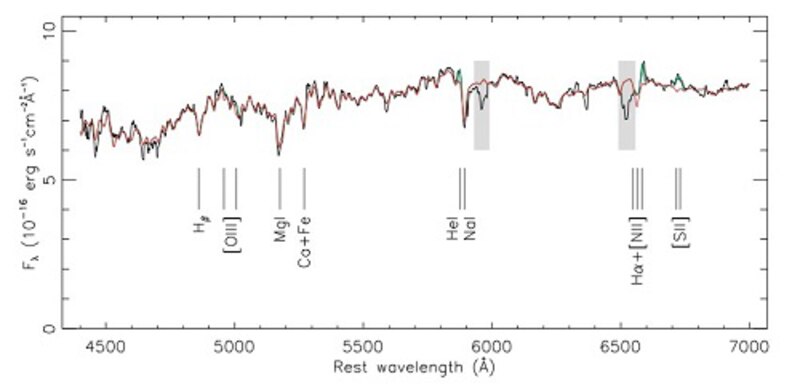Astronomers Capture Rapid Brightening of Tidal Disruption Event AT2018hyz

Astronomers have observed a remarkable phenomenon involving a tidal disruption event (TDE) designated AT2018hyz, which has been rapidly brightening in the radio spectrum. This event, located approximately 665 million light years from Earth, was documented by an international team of researchers using a range of telescopes, including the MeerKAT radio telescope and the Atacama Large Millimeter/submillimeter Array (ALMA). The findings, published on July 11, 2025, on the arXiv preprint server, provide crucial insights into the behavior and characteristics of TDEs, which occur when a star approaches a supermassive black hole and is torn apart by its tidal forces.
The observational campaign revealed that AT2018hyz's radio emissions have continued to increase in brightness, with a peak luminosity measured at approximately 10 duodecillion erg/s. This level of brightness surpasses that of all previously recorded non-relativistic TDEs, marking it as a significant event in astrophysical research. The emission's evolution indicates a stable peak frequency while its flux density experiences rapid growth.
Yvette Cendes, an astronomer at the University of Oregon and lead author of the observational study, noted that earlier observations in 2022 had detected radio emissions from AT2018hyz, likely from a mildly relativistic outflow initiated approximately two years after the event's optical discovery. The recent observations build upon this data, suggesting two primary hypotheses for the origin of the rapidly rising radio emissions: a spherical outflow launched approximately 620 days post-disruption or a highly off-axis relativistic jet.
The significance of this research lies not only in the details of AT2018hyz but also in the broader implications for understanding TDEs. According to Dr. Mark Smith, an astrophysicist at the California Institute of Technology, "Observations like these deepen our understanding of the dynamic processes occurring near black holes and could have implications for how we view other cosmic phenomena."
The TDE AT2018hyz was initially discovered in 2018 by the All Sky Automated Survey for SuperNovae (ASASS-SN) and is associated with the post-starburst galaxy 2MASS J10065085+0141342. The recent findings suggest that studying such events can enhance our comprehension of the physics involved in black hole accretion processes and the resulting emissions.
The rapid brightening of AT2018hyz not only contributes to theoretical models of TDEs but also exemplifies the advancements in observational technology that enable astronomers to capture these fleeting cosmic events. As the research continues, the astronomy community anticipates further developments that will shed light on the intricacies of black hole interactions with stellar bodies, potentially leading to a re-evaluation of existing astrophysical models.
In conclusion, the observed phenomena surrounding AT2018hyz represent a significant milestone in astrophysical research, highlighting the importance of collaborative observational efforts in unraveling the mysteries of the universe. The implications of this research extend beyond the immediate findings, setting the stage for future inquiries into the nature of tidal disruption events and their role in the cosmic landscape.
Advertisement
Tags
Advertisement





